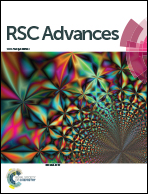High-performance poly(lactide) composites by construction of network-like shish-kebab crystals†
Abstract
Poly(lactide), PLA, suffers from brittleness and poor heat-resistance. Herein, a novel strategy to in situ fabricate high-performance PLA composites is reported for the first time, i.e., by solid-state uniaxial stretching in the presence of N1,N1′-(ethane-1,2-diyl)bis(N2-phenyloxalamide) (OXA) as needle-like nucleation templates. As a consequence, a tensile strength of >120 MPa, an elongation at break of >25% and a heat-resistant temperature of >150 °C of the PLA composites are simultaneously achieved. The superior performances are ascribed to unique interlocked network-like shish-kebab crystal structures that formed upon solid-state hot-stretching in the presence of OXA. This research may create a new type of sustainable engineered plastic.


 Please wait while we load your content...
Please wait while we load your content...